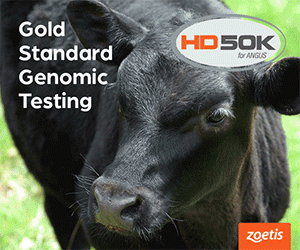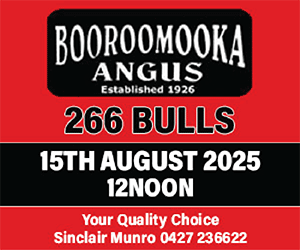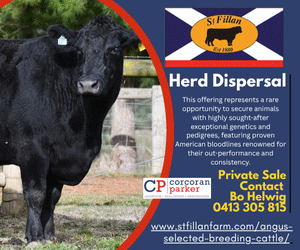Summary
Birth
Calving Ease Direct – (%) – Genetic differences in the ability of a sire’s calves to be born unassisted from 2-year-old heifers. Higher EBVs indicate fewer calving difficulties in 2-year-old heifers.
Calving Ease Daughters – (%) – Genetic differences in the ability of a sire’s daughters to calve unassisted at 2 years of age. Higher EBVs indicate fewer calving difficulties in 2-year-old heifers.
Gestation Length – (Days) – Genetic differences between animals in the length of time from the date of conception to the birth of the calf. Lower EBVs indicate shorter gestation length.
Birth Weight – (Kg) – Genetic differences between animals in calf weight at birth. Lower EBVs indicate lighter birth weight.
Growth
200 Day Growth – (Kg) – Genetic differences between animals in live weight at 200 days of age due to genetics for growth. Higher EBVs indicate heavier live weight.
400 Day Weight – (Kg) – Genetic differences between animals in live weight at 400 days of age. Higher EBVs indicate heavier live weight.
600 Day Weight – (Kg) – Genetic differences between animals in live weight at 600 days of age. Higher EBVs indicate heavier live weight.
Maternal
Mature Cow Weight – (Kg) – Genetic differences between animals in live weight of cows at 5 years of age. Higher EBVs indicate heavier mature weight.
Mature Body Condition Score – (Score) – Genetic differences between animals in the body condition of mature females. Higher EBVs indicate more body condition of mature females.
Mature Cow Height – (cm) – Genetic differences between animals in the height of mature females. Higher EBVs indicate taller mature females.
Milk – (Kg) – Genetic differences between animals in live weight at 200 days of age due to the maternal contribution of its dam. Higher EBVs indicate heavier live weight.
Fertility
Days to Calving – (Days) – Genetic differences between animals in the time from the start of the joining period (i.e. when the female is introduced to a bull) until subsequent calving. Lower EBVs indicate shorter time to calving.
Scrotal Size – (cm) – Genetic differences between animals in scrotal circumference at 400 days of age. Higher EBVs indicate larger scrotal circumference.
Carcase
Carcase Weight – (Kg) – Genetic differences between animals in hot standard carcase weight at 750 days of age. Higher EBVs indicate heavier carcase weight
Eye Muscle Area – (cm2) – Genetic differences between animals in eye muscle area at the 12/13th rib site in a 400 kg carcase. Higher EBVs indicate larger eye muscle area.
Rib Fat – (mm) – Genetic differences between animals in fat depth at the 12/13th rib site in a 400 kg carcase. Higher EBVs indicate more fat.
Rump Fat – (mm) – Genetic differences between animals in fat depth at the P8 rump site in a 400 kg carcase. Higher EBVs indicate more fat.
Retail Beef Yield – (%) – Genetic differences between animals in boned out saleable meat from a 400 kg carcase. Higher EBVs indicate higher yield.
Intramuscular Fat – (%) – Genetic differences between animals in intramuscular fat (marbling) at the 12/13th rib site in a 400 kg carcase. Higher EBVs indicate more intramuscular fat.
Feed Efficiency
Net Feed Intake (Feedlot) – (Kg/Day) – Genetic differences between animals in feed intake at a standard weight and rate of weight gain when animals are in a feedlot finishing phase. Lower EBVs indicate more feed efficiency.
Temperament
Docility – (%) – Genetic differences between animals in temperament. Higher EBVs indicate better temperament.
Structure
Claw Set – (Score) – Genetic differences between animals in claw set. Lower EBVs indicate more curl of the claw set.
Foot Angle – (Score) – Genetic differences between animals in foot angle. Lower EBVs indicate less heal depth.
Leg Angle – (Score) – Genetic differences between animals in leg angle. Lower EBVs indicate a more angular leg angle.
Selection Indexes
The Angus Breeding Index ($A) & Angus Breeding Low Feed Cost Index ($A-L) – ($) – Genetic differences between animals in net profitability per cow joined in a typical commercial self-replacing herd using Angus bulls.
- Self-replacing herd
- Daughters are retained for breeding
- Identifies animals that will improve profitability in the majority of commercial, self-replacing, grass and grain finishing beef production systems.
- $A includes an objective of maintaining mature cow weight, whereas the $A-L does not include this objective.
Higher selection index values indicate greater profitability.
Domestic Index ($D) & Domestic Low Feed Cost Index ($D-L) – ($) – Genetic differences between animals in net profitability per cow joined in a commercial self-replacing herd targeting the domestic supermarket trade.
- Self-replacing herd
- Daughters are retained for breeding
- Steer progeny are either finished using pasture, pasture supplemented by grain or grain (e.g. 50 to 70 days).
- Steer progeny are slaughtered at a carcase weight of 280kg at 16 months of age.
- Eating quality traits important to suit MSA Program.
- $D includes an objective of maintaining mature cow weight, whereas the $D-L does not include this objective.
Higher selection index values indicate greater profitability.
Heavy Grain Index ($GN) & Heavy Grain Low Feed Cost Index ($GN-L) – ($) – Genetic differences between animals in net profitability per cow joined in a commercial self-replacing herd targeting pasture grown steers with a 250-day feedlot finishing period for the grain fed high quality, highly marbled markets.
- Self-replacing herd
- Daughters are retained for breeding
- Steer progeny are pasture grown with a 250-day feedlot finishing period.
- Steer progeny are slaughtered at a carcass weight of 455kg at 24 months of age.
- Targeting high quality, highly marbled markets with a significant premium for superior marbling.
- $GN includes an objective of maintaining mature cow weight, whereas the $GN-L does not include this objective.
Higher selection index values indicate greater profitability.
Heavy Grass Index ($GS) & Heavy Grass Low Feed Cost Index ($GS-L) – ($) – Genetic differences between animals in net profitability per cow joined in a commercial self-replacing herd targeting pasture finished steers.
- Self-replacing herd
- Daughters are retained for breeding
- Steer progeny are finished on pasture.
- Steer progeny are slaughtered at a carcass weight of 350kg at 22 months of age.
- Eating quality traits important to suit MSA Program.
- $GS includes an objective of maintaining mature cow weight, whereas the $GS-L does not include this objective.
Higher selection index values indicate greater profitability.
Angus Terminal Sire index ($T) – ($) – Designed for situations where Angus bulls are being used as a terminal sire over mature breeding females and all progeny, both male and female, are slaughtered.
- Terminal breeding program where Angus bulls are being used as a terminal sire over mature females.
- All progeny, both male and female, are slaughtered.
- Focus on increasing growth, carcase yield and eating quality.
- No emphasis is given to female fertility or maternal traits.
Higher selection index values indicate greater profitability.
AngusPRO index ($PRO) – ($) – Genetic differences between animals in net profitability per cow joined in a commercial self-replacing herd based in New Zealand that targets the production of grass finished steers for the AngusPure programme.
- New Zealand production system
- Self-replacing herd
- Daughters are retained for breeding.
- Steer progeny are finished on pasture for the AngusPure programme.
- Steer progeny are slaughtered at a carcase weight of 290kg at 20 months of age.
- Significant premium for steers that exhibit superior marbling.
Higher selection index values indicate greater profitability.






